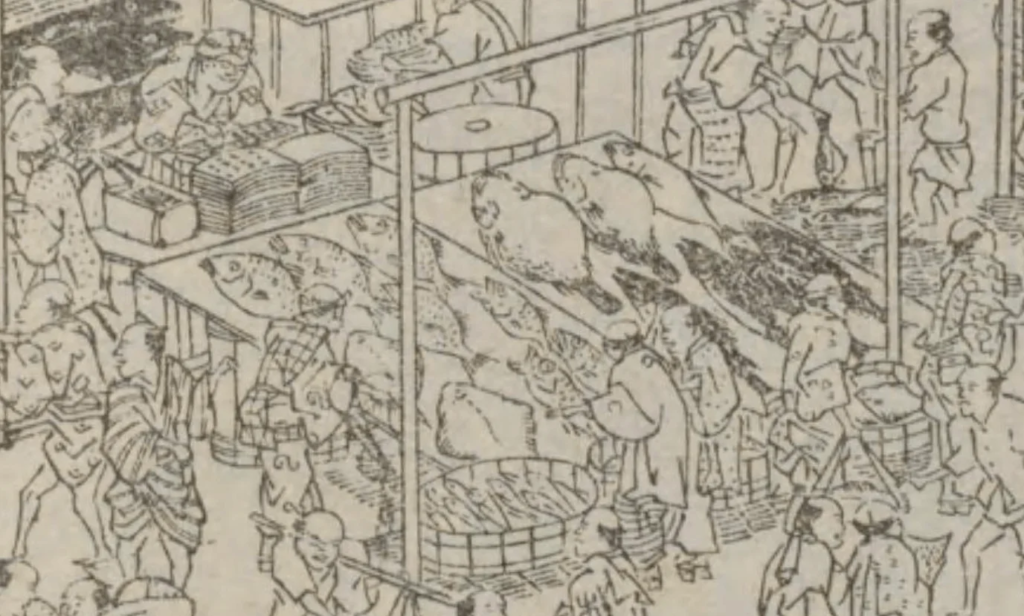
Itabune, a board, and the right to sell fish in Tokyo, Edo Nihonbashi
Fish merchants in Edo, Tokyo each set up a “itabune” (literally “board boat”) – this came to be called after adding a shallow rim to the backside of a cutting board, surrounding it to contain a little saltwater, showcasing and selling live fish laid flat in it to demonstrate their freshness. This originated from the shape of the cutting board’s backside resembling a boat, hence the term “itabune” was adopted.
The “itabune”, a display stand resembling a door panel laden with fish, can be found in the geographical record of Edo, “Edo Meisho Zue”(Painting of Edo, old tokyo). It seems that many influential merchants owned these. The “itabune” came with sales rights for each board, and it is said that many small-scale merchants would rent one to several of these boards for their trade.
The Nihonbashi Fish Market History Bulletin (日本橋魚市場沿革紀要) also explains the above as follows.
按スルニ魚商人ハ各自戸板ヲ設ケ(後チ板舟ト稱シ俎ノ裏面ニ浅キ縁リノ如キモノ貼リ圍ヒ其内ニ浅サ寸斗リノ鹽水ヲ㶆留シ齎ラシ來レル生魚ヲ平扁ニ活ケ蓄ヘ新鮮溌剌ノ勢ヲ示シ街売セシヨリ其俎ノ裏面ノ形ヲ畧シ船ニモ類似スルヲ以テ字シテ之レヲ板舟ト唱ヘ來シカ)…
Let’s take a closer look at the Edo Meisho Zue. When enlarged, you can see various types of fish, perhaps sea bream, lined up on board-shaped objects. There are different figures, such as a person writing in what seems to be a ledger and another carrying items.

Citation
The thumbnail and images of this page were cited from National Diet Library of Japan